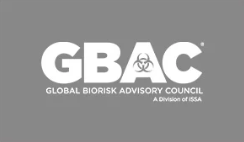The Evolution of Forensic Services
Forensic services have greatly advanced over the past few decades. This article explores key advances that have impacted the profession as a whole.
Every job and position evolves over time. Often, this is caused by advances in both technology and knowledge. Through the use of technology, we can accomplish extraordinary things that wouldn’t have been possible several years ago. Indeed, new tech and a deeper understanding has certainly benefitted the forensic services business. It has helped shape how evidence can be obtained against criminals and how crimes can be prosecuted. Let’s explore some of the most interesting evolutions of forensic services.
Fingerprint Screening
The  history of forensic services dates back to the use of fingerprint screening since the early 1900s. By 1911, prosecutors were able to successfully win a murder conviction after convincing a jury that the accused had left their fingerprints at the scene of the crime where the victim was killed. It’s worth pointing out that this method had been a part of forensic services in Europe for decades. Later, sir Edward Henry, the commissioner of the Metropolitan Police of London, took this concept a step further. He used the pattern, flow and direction of fingerprints to develop his own fingerprint analysis. The Henry Classification System is still used on an international level.
history of forensic services dates back to the use of fingerprint screening since the early 1900s. By 1911, prosecutors were able to successfully win a murder conviction after convincing a jury that the accused had left their fingerprints at the scene of the crime where the victim was killed. It’s worth pointing out that this method had been a part of forensic services in Europe for decades. Later, sir Edward Henry, the commissioner of the Metropolitan Police of London, took this concept a step further. He used the pattern, flow and direction of fingerprints to develop his own fingerprint analysis. The Henry Classification System is still used on an international level.
Lie Detection
Today, lie detectors are used by checking if the blood pressure of an individual is elevated when answering questions. However, before this, the polygraph test was used based on examining the saliva in the mouth of a suspect. The concept behind this idea was that a guilty person would produce less saliva. Now, machines can measure a range of different bodily responses when answering questions. Some experts deem lie detectors to be highly accurate, claiming the rate of success is about 90%. However, critics suggest that the true number could be close to 70%. For this reason, they are not typically favored as evidence of a crime.
Forensic Ballistics
Forensic Ballistics were first used in 1835. Here a bullet was connected to a murder weapon using a physical analysis. By the 1920’s, this type of investigation was far more precise. Calvin Goddard introduced the comparison microscope. Here, bullets and shell casings from which the bullets had been fired could be linked and paired. By 1970, it was possible to detect gunshot residue. This was achieved by scanning electron microscopes.
Toxicology
Of course one of the biggest developments in the worlds of forensic services is the use of toxicology reports. It was Karl Landsteiner who eventually won a Nobel Prize for his work comparing different blood groups. It helped shape numerous criminal investigations. By the 1990s other tests had been developed which examined saliva, sweat, semen and countless other bodily fluids.
It’s clear that the world of forensic services has progressed a great deal over the last several decades. It will be fascinating to find out where the world of forensics will take criminal investigations in the years that lie ahead.
Keep Your Home & Family Safe











